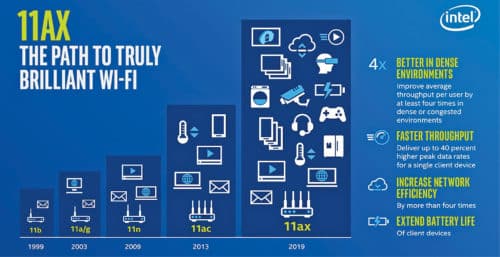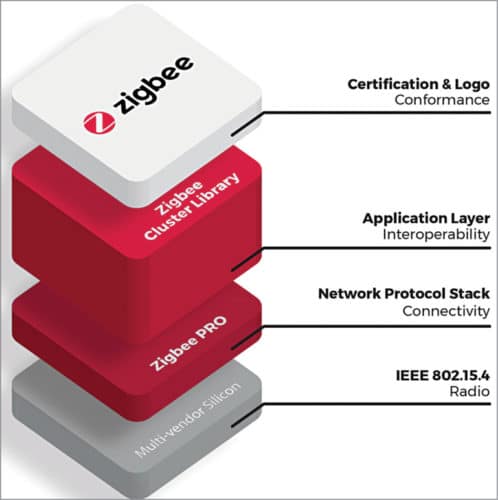To keep pace with the new technologies like the Internet of Things, Artificial Intelligence and 5G spectrum, the wireless technologies are also getting upgraded. Here is a peek at what’s happening in the areas of short-range as well as long-range communication

For a connected world we need various short- and long-range wireless communication devices to solve challenges like pollution control, disaster management, infrastructure monitoring, resource management and waste management. Short-range wireless communication can transfer data from a few centimetres to several metres. Some technologies that support short-range wireless communication are Bluetooth, Wi-Fi, near-field communications (NFC) and Zigbee.
Long-range wireless communication uses signals that travel from a few to several thousand kilometres. Some technologies that support long-range wireless communication are radio transmission, satellite communication and LoRaWAN.
Bluetooth 5
Bluetooth replaces cables between different electronic devices for their communication with each other by establishing a personal area network. It can transmit audio, video, images or documents at high speed within fifty metres range. In its setup, one device operates as the master and one or more devices operate as slaves to send and receive data.
Bluetooth 5 is the latest version of this technology. It consumes low power and transfers data at 2Mbps speed. It employs Gaussian Frequency Shift Keying (GFSK) modulation technique over 2.4GHz to 2.483GHz spectrum.
It allows hands-free phone calls with a wireless cellular headset, speaker or car’s audio system. It is widely used to establish a wireless connection between a mobile phone or computer and other electronic devices, including mouse, keyboard, printer, digital camera, speaker, etc.
Bluetooth 5 version offers two interfaces for the Internet of Things (IoT) devices: one for low energy operation to transmit fewer data over much longer distances, and the other for transmitting twice the data over a shorter range.
Bluetooth 5 allows users to play audio on two connected devices at the same time. People can send audio to multiple rooms in a house, create stereo effect in one space, or share audio between two sets of headphones.
Another area in which Bluetooth 5 adds improvement is Beacon technology; businesses such as retail can beam messages to nearby potential customers with offers or advertisements. People can opt out of this functionality by turning off location services and checking app permissions for retail stores.
Beacon technology can also facilitate indoor navigation, such as in an airport or shopping mall, and makes it easier for warehouses to track inventory.
Wi-Fi 6
A Wi-Fi setup consists of a wireless router that links many devices with an Internet connection depending on router configuration. Wi-Fi 6, also known as 802.11ax Wi-Fi, is the next-generation standard in Wi-Fi technology. It utilises 2.4GHz and 5GHz bands, and provides 9.6Gbps data transfer rate.
With its 1024-QAM (Quadrate amplitude modulation) technique, each symbol carries ten bits rather than eight bits, improving raw speeds by 25 per cent compared to 802.11ac 256-QAM. There are two key technologies that improve efficiency and speed up Wi-Fi 6 connections: multi-user multiple input multiple outputs (MU-MIMO) and orthogonal frequency division multiple access (OFDMA).
If we assume a Wi-Fi connection as a series of delivery trucks delivering data packets to devices, with OFDMA each truck can deliver multiple parcels to multiple devices simultaneously, improving efficiency for both uploads and downloads. Its 8×8 MU-MIMO technique allows more than eight streams available for streaming, downloading, torrenting, playing virtual reality/augmented reality (VR/AR), massively multiplayer online games or role-playing games.
Target wake time feature allows devices to decide when and how often they will wake up to send or receive data, thus, increasing device sleep time and improving battery life of mobile and IoT devices. Base service station colour marks frames from neighbouring networks to ignore interference from the neighbours’ wireless networks.
Wi-Fi 6 provides communication distance of about a hundred metres, making it suitable for quality connectivity in locations with hundreds or thousands of connected devices such as stadiums and other public venues, as well as corporate networks utilising time-sensitive, high-bandwidth and low-latency applications. Wi-Fi 6 devices operate efficiently in the most dense and dynamic connectivity settings like airports and railway stations. It provides better security features with the latest Wi-Fi Protected Access 3 (WPA3).
Near-field communication
NFC is often used for secure payment applications, fast passes, sharing information and wireless charging applications. It operates at 13.56MHz ISM frequency with a maximum range of around ten centimetres. This provides a more secure connection, which is usually encrypted. An inbuilt NFC tag allows phones, tablets, laptops and other devices to easily share data with other NFC-equipped devices.

NFC has evolved from radio-frequency identification (RFID) technology. It uses small, flat tags that can be attached to anything and used for identification, location, tracking and inventory management. When a reader unit is nearby, it transmits a high-power RF signal to the tag and reads the data stored in the memory.
NFC can be used for mobile payments and as an alternative to credit cards. It also enables transferring data between two NFC-enabled devices. With NFC, a connection is automatically started when another NFC device enters the previously-specified range. Once in range, the two devices instantly communicate and send prompts to the user to initiate mobile payments, data sharing or wireless charging.
NFC wireless charging mode allows contactless transfer of up to 1W power to small devices like Bluetooth headset, fitness tracker or smartwatch, and other IoT devices.
Zigbee 3.0
Zigbee is a standard wireless communication protocol that defines physical and Media Access Control (MAC) layers to handle many devices at low data rates. It uses 802.15.4 transceiver as base and operates at 868MHz, 902MHz to 928MHz, and 2.4GHz frequencies. It can build large mesh networks for device monitoring and control, handling up to 65,000 nodes. It can also support multiple types of radio networks such as point-to-point and point-to-multipoint. It can transfer data wirelessly over a distance of up to hundred metres at 250kB/s speed.

Zigbee technology is best suited for low-latency and low-energy consumption at lower bandwidths. It can transfer data in two modes: beacon and non-beacon. When there is no data communication from end devices, coordinators and routers in a beacon mode enter into sleep state.
Here, coordinators are responsible for initiating and managing devices over the network. They wake up after regular intervals and transmit beacons to the routers in the network. Thus, they operate when communication needs results in lower duty cycles and longer battery usage.
In non-beacon mode, coordinators and routers continuously monitor the active state of incoming data and, hence, consume more power.
Zigbee can be used for a range of applications including remote patient monitoring, wireless lighting and electrical meters, traffic management systems, industrial automation, home automation and smart grid monitoring. Smart grid monitoring involves remote temperature monitoring, fault locating, reactive power management and so on.
It also helps retailers operate more efficiently by supporting just-in-time inventory practices, as well as monitoring temperatures, humidity, spills and so on.
The latest Zigbee 3.0, built on the existing Zigbee standard, unifies the market-specific application to allow all devices to be wirelessly connected in the same network.
A Zigbee 3.0 certification scheme ensures interoperability of products from different manufacturers and 128-bit AES encryption for secure data connections.
RF transmission and SDR
RF is a form of electromagnetic transmission, ranging from 3kHz to 300GHz. It is used in wireless communication due to its property to penetrate through objects and travel long distances. Communication range depends on wavelength, transmitter power, receiver quality, and type, size and height of the antenna.
RF uses one transmitter section followed by a transmitting antenna, which is responsible for wireless signal transmission. This transmitted signal is received by the receiving antenna, amplified and demodulated to the original signal. This technology is widely used in military communications, personal communications, radio broadcast and communications in workplaces.
Software-defined radio (SDR) is a radio communication system that utilises software to implement components that have been implemented in the hardware transmitter/receiver unit on a computer or embedded system. SDR uses software to perform many of the basic functions on signals like mixing, amplification, filtering, modulation/demodulation, detection, etc.
The software is easy to reconfigure and can be used on many platforms. Using the power of digital processing, SDR is being used for different applications in many different areas. The software is used to change the configuration of the radio or upgrade as per the function required at a given time.
It is possible to apply changes to any standard and even add new waveforms purely by upgrading the software and without the need for changes to the hardware. This can even be done remotely, thereby providing considerable savings in cost. It is also possible to reconfigure radios and change their performance by updating software.
Satellite communication
Microwaves are a form of electromagnetic transmission used in wireless communication systems. Wavelength of microwaves ranges from one metre to one millimetre. Frequency varies from 300MHz to 300GHz. These are widely used for long-distance communication and are relatively less expensive. Devices using satellite technology allow users to stay connected wirelessly from anywhere on Earth.
Satellite communication consists of space and ground segments. The signal sent to the satellite through a device (satellite phone) is amplified by the satellite and sent back to the receiver antenna, which is located on Earth.
Efforts are on to leverage the benefits of technology for the betterment of mankind. Important initiatives pursued by Indian Space Research Organisation towards societal development include tele-education, tele-medicine, village resource centre and disaster management system programmes. The potential of space technology for applications of national development and television broadcast is enormous.
Fixed satellite services support international Internet connectivity to private business networks. Mobile satellite services that use a variety of transportable receiver and transmitter equipment provide communication services for land mobile, maritime and aeronautical customers. Broadcast satellite services (BSS) offer high transmission power for reception using very small ground equipment.
LoRaWAN
Long Range (LoRa) technology is designed to wirelessly connect battery-operated things to the Internet in regional, national or global networks. It has large potential in smart cities, smart homes and buildings, smart agriculture, smart metering, smart supply chain and logistics, and many other applications.
LoRa connects devices up to fifteen kilometres apart in rural areas, and penetrates dense urban or deep indoor environments. This requires minimum energy, with a prolonged battery lifetime of up to ten years, minimising battery replacement costs.
LoRa features end-to-end AES128 encryption, mutual authentication, integrity protection and confidentiality. LoRa modulation is based on Chirp spread-spectrum technology, which makes it perform well with multipath fading, channel noise and Doppler effect, even at low power. LoRaWAN for wide-area networks can use channels with a bandwidth of 125kHz, 250kHz or 500kHz, depending on region or frequency plan.






